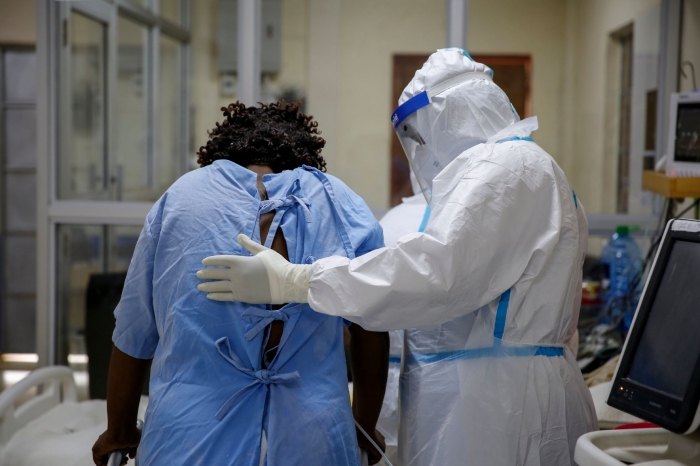
The COVID-19 outbreak has globally left its mark. There’s been different results and reactions to the virus throughout the world. Africa has an environment already painted to have a fragile healthcare system. However, it’s been recorded to have the least quantity of cases and deaths when the virus began to spread in March. Africa is now beginning to prepare for the second wave of the viral transmission.
Kenya has seen a 45 percent increase in coronavirus cases, and 8 percent increase in Egypt in recent statistics. Last Thursday, the Africa Centers for Disease Control and Prevention advised a call to action as Africa’s transmission is rising all over the continent. 1.3 billion people inhabit the region, but there is stabilization during the global health crisis.
Before the rise in cases, different countries in Africa were easing restrictions. Kenya was beginning to open up bars in late September, while schools partially opened in October.
However, with cases beginning to rise, African leadership is currently looking at their benchmarks with higher scrutiny.
Data collected from John Hopkins University reported that Africa has had about 1.5-million cases. These numbers are less than Europe, Asia, and the Americas. In terms of fatal cases, reports show Africa had an approximate total of 37,000 deaths. At the time of the report, there were 580,000 fatal cases in the Americas, and over 200,000 deaths in Asia and Europe.
The first case was reported in Egypt, and African governments had an immediate response. In some countries, they went into action before a single case was diagnosed. Based on Africa’s example, the formula to have less impact consists of fast action, public adherence, and overall demographic and infrastructure of the nation.
In the beginning, Africa prepared to test for the virus in two regions: South Africa and Senegal. Two months passed, and 44 countries prepared to test, analyze, and isolate coronavirus breakouts. The first COVID-19 case came from Egypt in Mid-February, and African governments had an immediate response.
Some areas in Africa went into action before a single case was counted. Lesotho, a country found in South Africa known for its scenic views, shut down their schools as early as March 18. They didn’t receive their first case until their restrictions were lifted in May. In a population of over two-million, Lesotho has only seen 1,700 cases and 40 deaths.
The nation’s formula life preservation is conveyed in public surveys by Partnership for Evidence-Based Response to COVID-19 (PERC); 85 percent of the people who responded, confirmed they wore masks, and complied with other safety measures. African community health systems were already fast-acting, due to their ongoing battle of HIV/AIDS and the present Ebola outbreak. Local medical programs accommodated safety protocols geared for COVID-19.

These tactical restrictions came at the expense of the African dollar; over 2.2 million jobs were lost in the first half of the year. The United Nations Economic Commission foresees a hefty decline in economic growth. This response could lead to around 27-million people pushed to extreme levels of poverty.
More parts of Africa have been forced to reopen their economic system, even as the number of coronavirus cases rise above the previous count during the initial shutdown. The PERC survey revealed mixed feelings about the significance of the economy opening among African residents.
There have been reports of increased cases in Egypt, the Democratic Republic of Congo, and South Africa. Kenya seems to be experiencing a second wave in full swing. Roughly 1,500 new cases were counted in November. This report surpasses the first wave of coronavirus cases. During the first breakout, they had fewer than 1,000 reported incidents of COVID-19.
South Africa has the highest case-count; reaching over 800,000 cases. The least quantity of cases found in Africa includes Western Sahara, Seychelles, Eritrea, Mauritius, and Comoros. Most African countries have suspended public flights and applied travel bans, and countries like Rwanda, Zimbabwe, Djibouti, Morocco, and Botswana are closing their borders.
In new levels of innovation, the Africa CDC has implied the use of a web-based tool “to better manage public health emergency workforce deployments.” Africa is working proactively to cut the escalation of the coronavirus. The Africa CDC,alongside International Health Regulations (IHR), worked collaboratively on a project formulated by the Public Health England (PHE). They created a web-based tool, “AVoHC Net.”
The Africa CDC website states, “AVoHC Net is to facilitate rapid deployment and better administration of a standby workforce for public health emergencies across Africa.” The system is looking to match the speed of the virus.
In preparation for the second wave of COVID-19, leadership in Western Cape Province pushed a “resurgence warning” this week. South Africa’s local case count has now surpassed the national case reports. In response to the increase, Africa is considering the implementation of new restrictions that include additional law enforcement to apply more pressure on set health orders, alcohol store inspections, and restrictions on movement between popular hot spots around the nation.
COVID-19 continues to mold the world into a new form and present an advanced era of precaution. Diverse nations have had their way of managing the virus, but there is evidence in the procedures laid out by Africa that have proven most effective in saving lives. However, their method has come at the cost of their economy; the lives they have saved are priceless.
Part of the African model during a global pandemic has been to remain vigilant, and to react fast to new information that comes in. Africa has proven with fast reaction from leadership, and cooperation of public adherence, millions of lives can be saved. The unity of a nation works as a shield against a deadly virus that continues to strike throughout the world.







